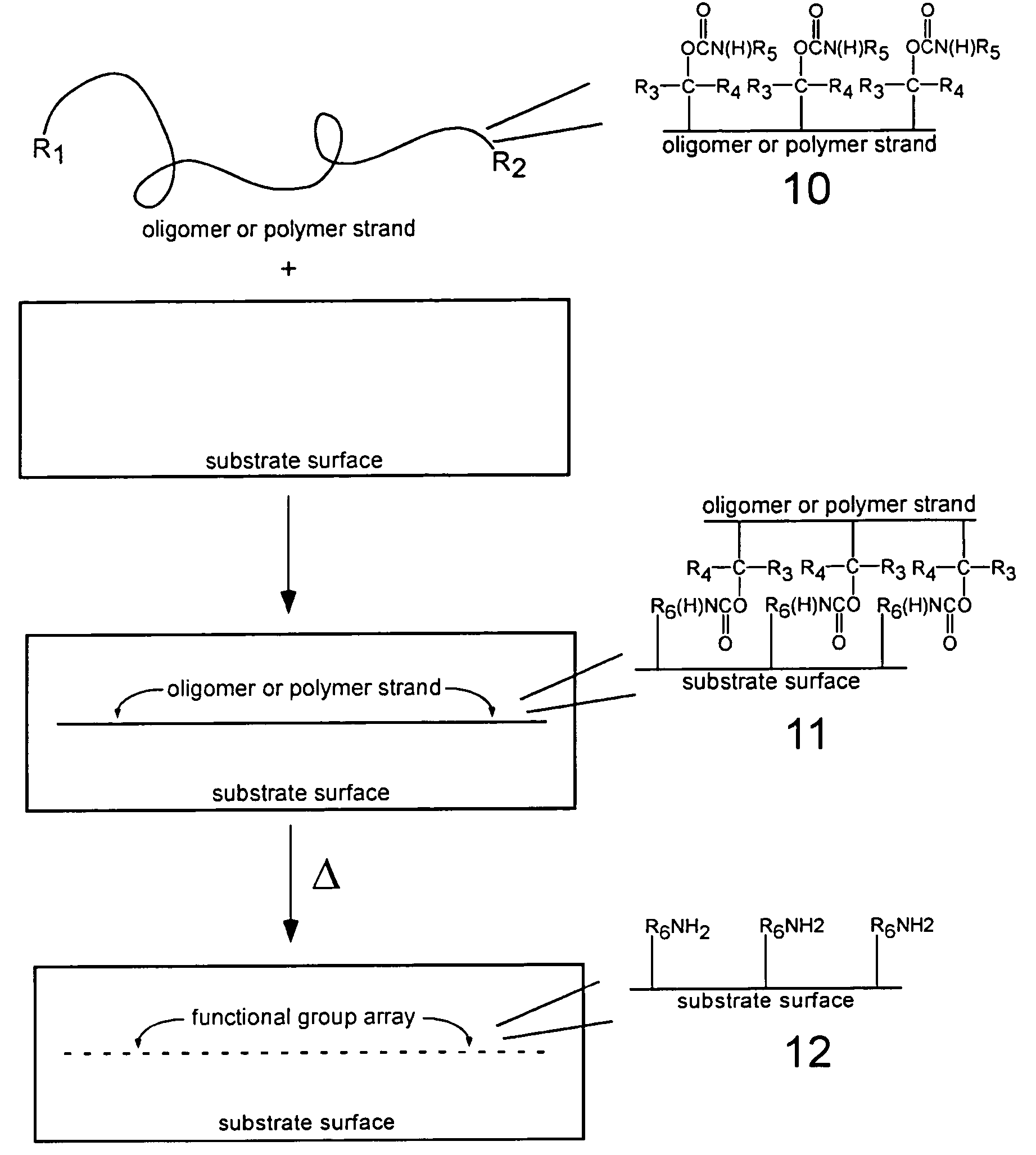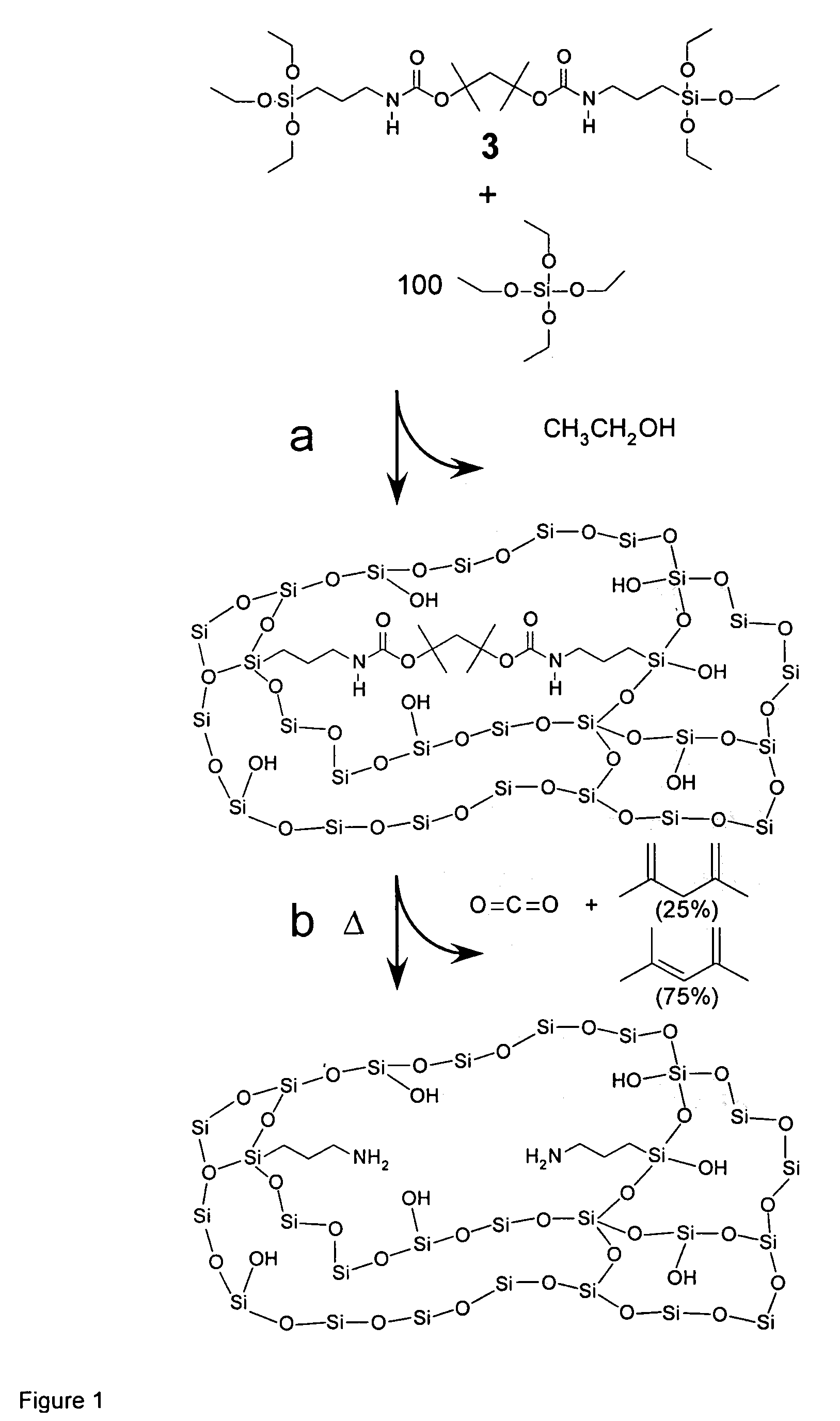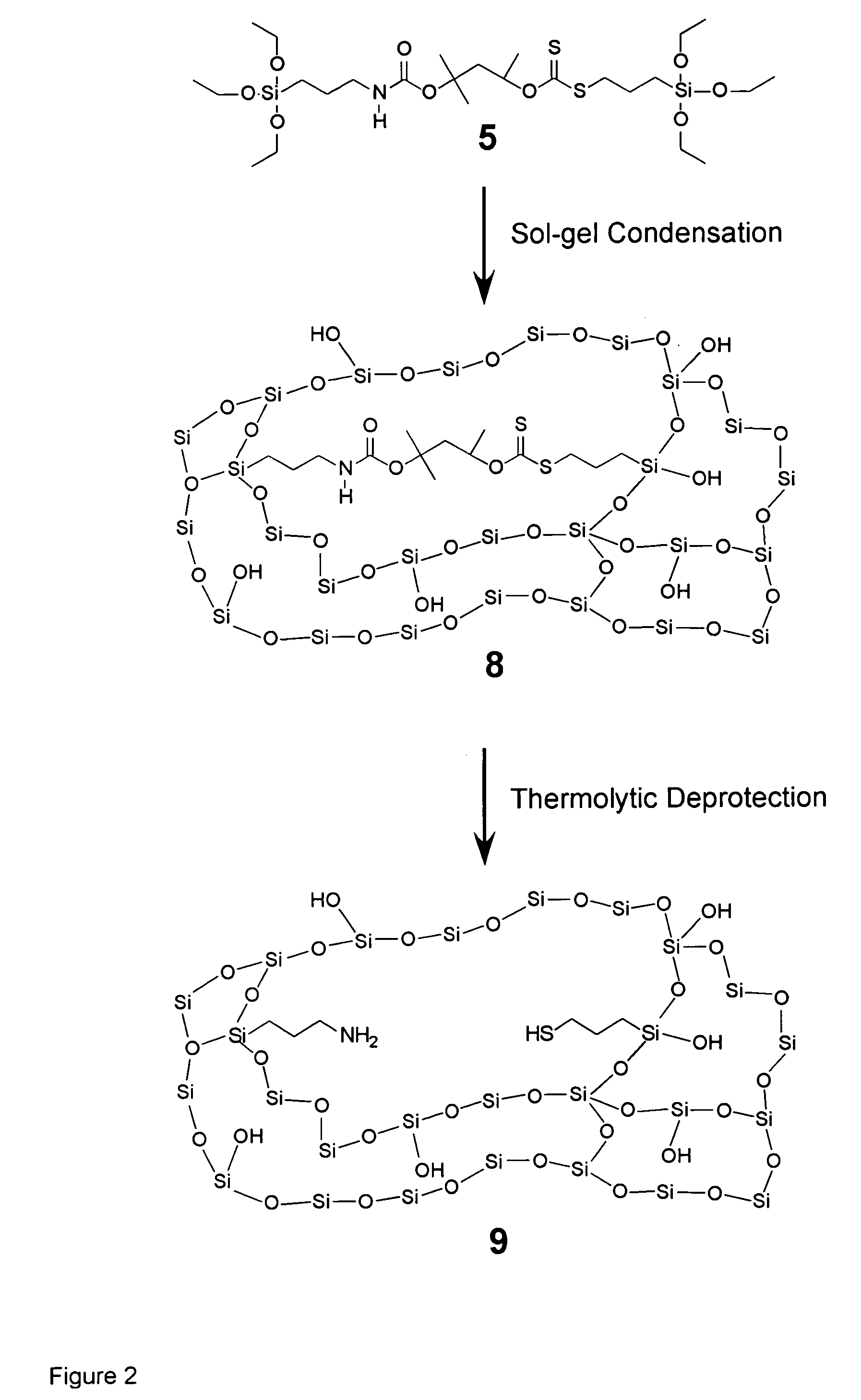Thermolytic synthesis of inorganic oxides imprinted with functional moieties
a technology of functional moieties and inorganic oxides, which is applied in the field of materials synthesis, can solve the problems of over-protecting immobilized imprint species with multiple points-of-attachment to the silica framework, and achieves the effect of improving the stability and stability of immobilized imprint species
- Summary
- Abstract
- Description
- Claims
- Application Information
AI Technical Summary
Benefits of technology
Problems solved by technology
Method used
Image
Examples
example 1
[0107] Use of Imprinted Amines Synthesized via Thermolysis to Construct a “Ship-in-the-Bottle” Type Catalyst. The synthesis of bulk imprinted silica using thermolysis is a useful method for synthesizing a catalyst that prevents the leaching of metal during liquid-phase catalytic processes, by encapsulation of the metal within a hydrophobic pocket from which it cannot escape. This can be applicable to a variety of liquid-phase catalytic processes such as oxidation, as well as palladium catalyzed carbon-carbon bond formation based on coupling reactions, to name only a few types of reactions. In all of these applications, a ubiquitous problem leading to loss of catalyst and downstream metal contamination involves leaching of catalyst in the form of metal particles or ions from the solid surface.
[0108] An imprinting-based solution to this problem is to build a hydrophobic micropore surrounding the catalytic active site—a type of ship-in-the bottle approach—which makes it impossible for...
example 2
[0109] Production and use of imprinted materials containing a catalytically active palladium complex. We extended the approach described above by controlling the active site environment via framework modification for an organometallic catalyst, through the synthesis of a tethered palladium complex within the imprinted pocket of 15. The approach is illustrated in FIG. 14. First, a bulk imprinting procedure was used to synthesize the site-isolated hydrophilic starting material 15.29 Adapting previously published procedures for the synthesis of a Suzuki coupling catalyst,43 a ligand was introduced by treating the imprinted primary amine with 2-pyridinecarboxyaldehyde, yielding material 16. Palladium was then introduced to synthesize hydrophilic catalyst 17. For the ligand, quantitative binding was achieved by contacting 1.1 equivalents of aldehyde (0.017 M in chloroform) with 15 at room temperature followed by filtration, chloroform wash, and vacuum drying. The palladation of 17 was pe...
example 7
[0112] thiol imprinting. Imprint 4. To a solution of O-isopropylxanthic acid potassium salt (525 mg, 3 mmol) in acetone (15 ml) at room temperature under N2 was added 3-iodopropyltriethoxysilane (1.0 g, 3 mmol) in 10 ml acetone dropwise. After 24 hours, the mixture was filtered through silica, reduced via rotary evaporation, and purified by silica chromatography (Silica Gel 60, hexanes / ethyl acetate) to yield a pale yellow oil (0.84 g, 2.5 mmol, yield 82%). 1H NMR (CDCl3): 0.752 (2H, t, J=8.0 Hz, CH2); 1.223 (9H, t, J=6.8 Hz, Si(OCH2CH3)3); 1.395 (6H, d, J=6.0 Hz, CH3); 1.814 (2H, q, J=8.0 Hz, CH2); 3.124 H, t, J=7.6 Hz, CH2); 3.814 (6H, t, J=6.8 Hz, Si(OCH2CH3)3); 5.776 (1H, q, J=6.4, CH). 13C NMR (CDCl3): 10.08 (CH2); 18.24 (CH3); 21.3 (CH3); 22.28 (CH2); 38.42 (CH2); 58.42 (CH2); 77.55 (CH); 214.27 (C═S).
[0113] Imprint 5. Under N2, potassium hydroxide (1.6 g, 28.5 mmol), was added to a solution of 2-methyl-2,4-pentanediol (15 ml, 117 mmol) in 4 ml dimethylsulfoxide and heated to...
PUM
| Property | Measurement | Unit |
|---|---|---|
| temperature | aaaaa | aaaaa |
| temperature | aaaaa | aaaaa |
| temperature | aaaaa | aaaaa |
Abstract
Description
Claims
Application Information
 Login to View More
Login to View More - R&D
- Intellectual Property
- Life Sciences
- Materials
- Tech Scout
- Unparalleled Data Quality
- Higher Quality Content
- 60% Fewer Hallucinations
Browse by: Latest US Patents, China's latest patents, Technical Efficacy Thesaurus, Application Domain, Technology Topic, Popular Technical Reports.
© 2025 PatSnap. All rights reserved.Legal|Privacy policy|Modern Slavery Act Transparency Statement|Sitemap|About US| Contact US: help@patsnap.com



